
Bad Night on the Bora Bora Lagoon
On the evening of July 2, San Francisco-based cruisers Seth and Elizabeth Hynes suffered a shock that most sailors only endure in nightmares. After dining ashore with their three young kids, they discovered that their five-year-old Outremer 51, Archer, was missing from the mooring field off the Bora Bora Yacht Club, as was the commercially administered mooring she was tied to.
The big red cat eventually slammed into two over-water bungalows at the Bora Bora Pearl Beach Resort and Spa, where she incurred substantial damage before Seth and Elizabeth were able to kedge Archer away from the hotel structures, with help from several other cruisers. Winds that evening ranged from 20 to 35 knots according to Seth, with higher gusts reported by others — characteristic of the current “Maramu” season.
We are happy to report that no one was hurt during the incident, and that Archer was well insured.
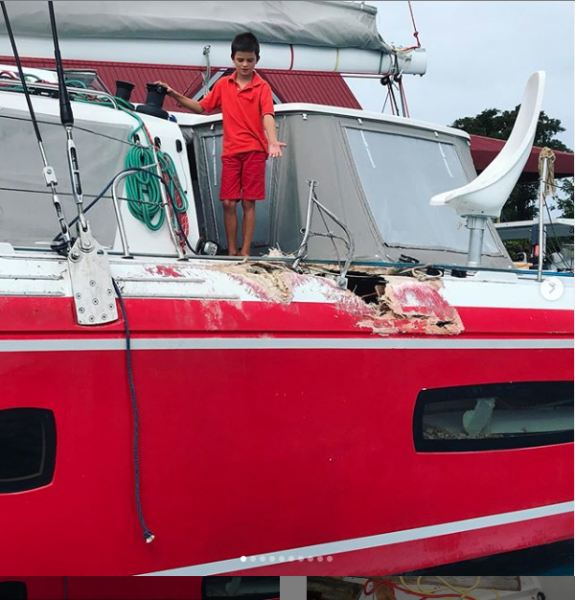
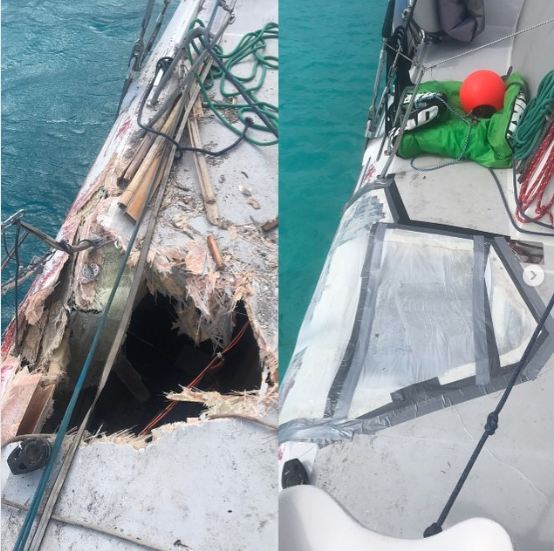
This is the first mooring-failure incident we can recall happening in French Polynesia during the 23-year history of the Pacific Puddle Jump. But it is particularly troubling because recently enacted regulations now officially prohibit all anchoring in the Bora Bora lagoon, meaning that all visiting yachts are supposed to moor on commercial moorings. That mandate has been relaxed in some areas temporarily, however, as plans to replace or remove older moorings have not been completed.
According to Francis Hazlehurst, dockmaster of Bora Bora Mooring Service, the mooring that failed is one of a group of moorings that had not yet been upgraded since his company took over the administration of the Yacht Club’s mooring field in May. However, he says that 40-50 recently installed or refurbished moorings are available in the Bora Bora lagoon.
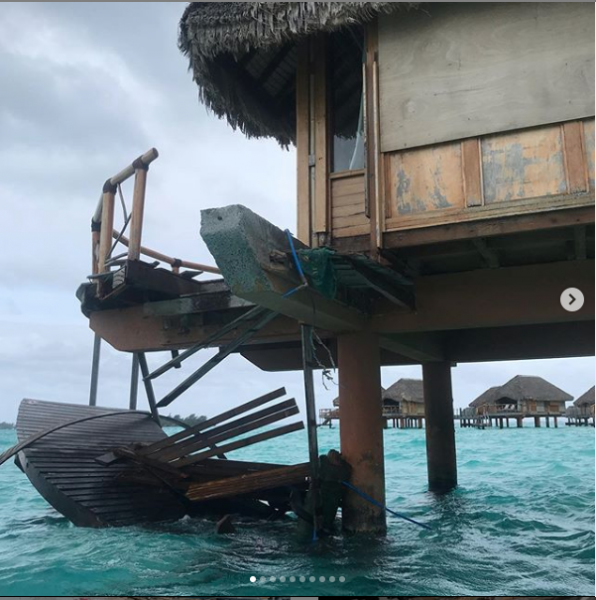
Meanwhile, Seth and Elizabeth have wasted no time in initiating repairs, no doubt acutely aware that the damage could have been much worse. Having cruised the South Pacific 10 years ago aboard the Lagoon 38 Honeymoon — yup, they were newlyweds at the time — they are among the more experienced voyagers in this year’s Pacific Puddle Jump fleet.
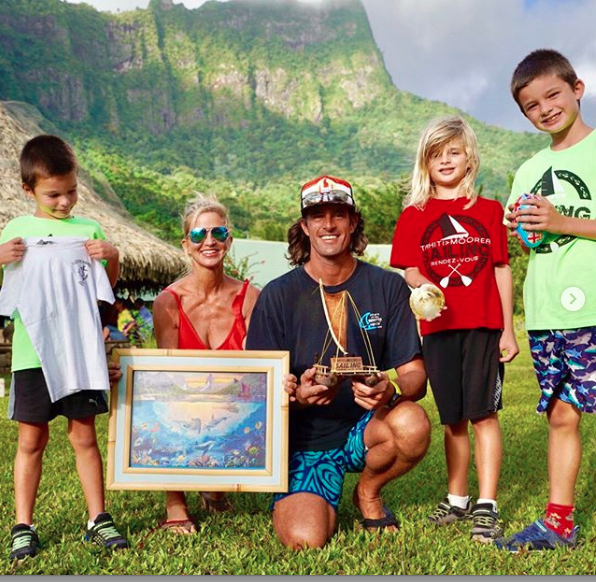
Our thoughts are with the Hynes family, and we wish them the best of luck in completing repairs to Archer.
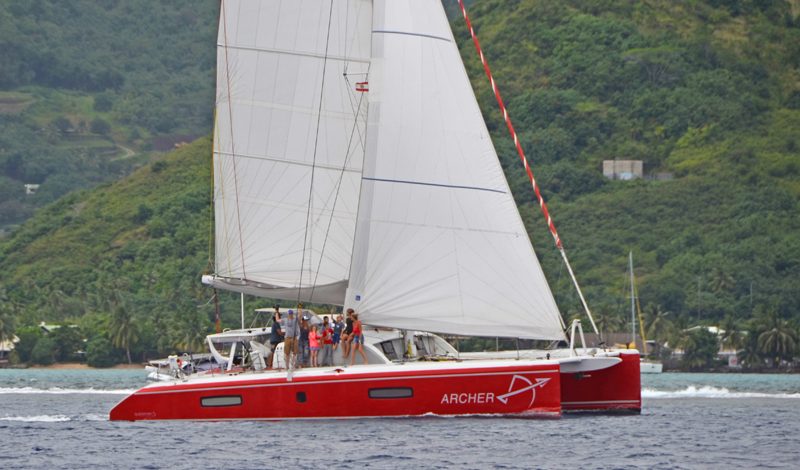
Young Sailors Converge on San Francisco Bay
C420 North Americans at St. Francis Yacht Club
Surprise. We thought we’d see 60 boats when C420 North American Championship racing kicks off tomorrow, Thursday. Instead, 102 boats registered from points around the USA. All competitors are under age 22, and this is the biggest youth regatta San Francisco Bay has seen in a while.
Twelve races are scheduled, Thursday through Sunday, with a first gun at noon each day.
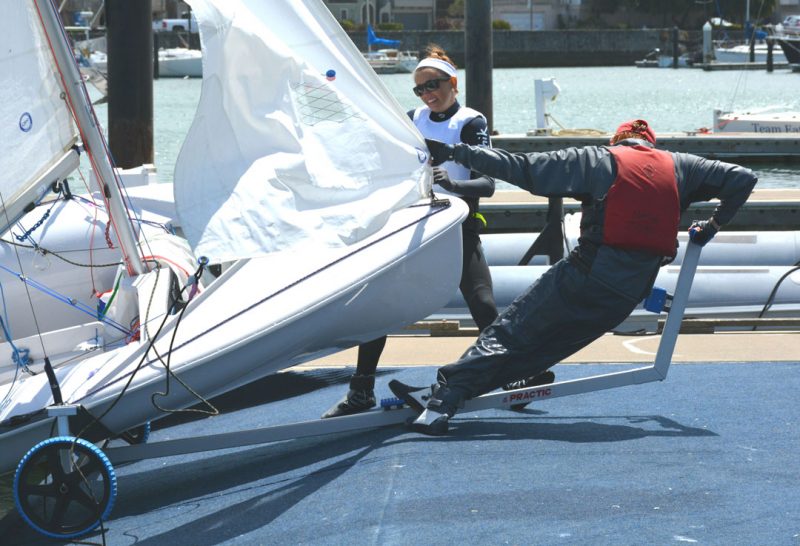
The C420 (Club 420) is a beefed up version of the i420 (International 420). The design was beefed up to meet the pounding given club and college fleets. During his years at Princeton, Paul Heineken, the current commodore of the hosting club, St. Francis, won the 1966 i420 national championship. He might tell you in that context that the C420 was dumbed down as well as beefed up, with tweakables de-tweaked. The commodore would be correct. However, big names have climbed through the C420 ranks to great things. One name that jumps out is Taylor Canfield, NA champion in 2006 and 2009, later world match-race champion and now skipper of 2021 America’s Cup hopeful Stars + Stripes.
No predictions for the 2019 NAs, but one pair everyone will be watching is a polished team from Coronado, Ansgar Jordan and Patrick Mulcahy, winners of the Nationals in 2018 and third at the NAs. They made the quarter-finals two weeks ago at the US Youth Match Racing Championship in San Diego, and they’ve put in time on SF Bay. There’s good money also on rising San Diego stars Jack Egan and Jack Plavan, who were factors as well in the match racing along with Jeffrey Peterson from Balboa YC, who made the semis. By the way, 100 is a lot of entries for the 2019 NAs, but 2018 was raced on the Mysterious East Coast — where most of the action goes on — with 166.
Starts are on the Cityfront or the face of Alcatraz. Did we mention, plenty of ebb as we get things going?
Lots of Bay Area kids are in this. Team StFYC will be out in force. Their kids have been training hard, but they’re not alone. This is the real deal. Peninsula Youth Sailing Foundation should be strong. Encinal YC was practicing on the Cityfront over the weekend.
— Kimball Livingston
Leiter Cup at Richmond YC
Vanloads of teenage girls poured into Richmond YC on Monday, hauling blade cases bigger than they were plus all the gear for a week of racing Laser Radials on the Berkeley Circle. If conditions in the Slot get even gnarlier than usual, the race committee can move the action to the more protected waters of Keller Cove off Point Richmond’s Miller/Knox shoreline.
The girls, from all over the United States, including several from Hawaii, will race for the US Youth Women’s Singlehanded Championship in Laser Radials and 4.7s. (The 4.7 has a smaller bottom mast section and sail than the Standard and the Radial. The mast’s pre-bend reduces the power of the rig, and the sail measures only 4.7 square meters, compared to 7 for the Standard and 5.7 for the Radial. The smaller sail means that sailors weighing less than 145 lbs. can handle the boat. All the Lasers have the same hull.)
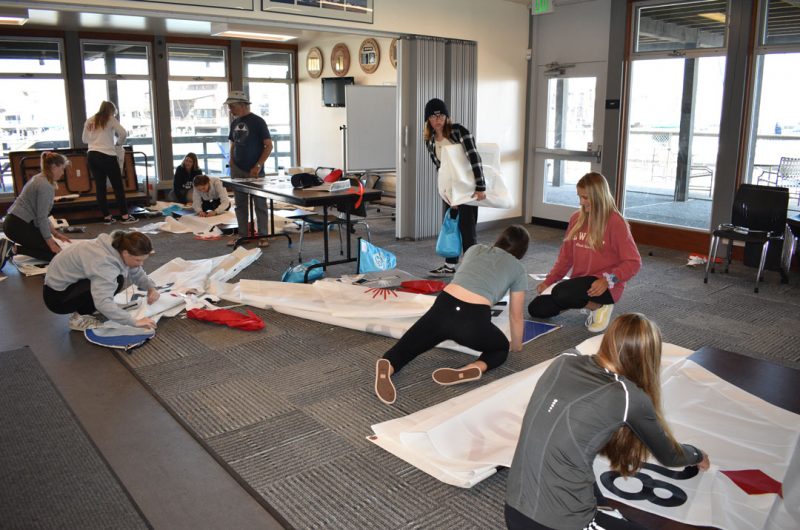
A two-day clinic started yesterday. No private coaching is allowed. Instead US Sailing provides world-class female coaches to help all the competitors refine their skills. Among this year’s coaches is Anna Tobias, perhaps better known by her maiden name, Anna Tunnicliffe. In 2008 Anna won an Olympic gold medal sailing the Radial. She was Rolex World Sailor of the Year in 2009 and 2011 and US Sailing’s Rolex Yachtswoman of the Year every year from 2008 to 2011.
Three days of racing — Thursday-Saturday — will follow the clinic. The 43 sailors will vie for the Nancy Leiter Clagett Trophy. They’ll all vote for a Sportsmanship award recipient too. Last year’s Sportsmanship winner, Sarah Grace, from Severn Sailing Association in Annapolis, is among this year’s sailors; last year’s Leiter Cup winner, Elizabeth Shanahan of Connecticut, is not. Six entries represent the host club, RYC. Encinal, StFYC and SFYC each have one entry. Laser Performance provided new boats, but some of the locals chose to sail their own.
During the regatta, the girls will have plenty of time to make new friends. Their busy schedule includes a movie night, a speaker night and a night out on the town in San Francisco. RYC members who live in the neighborhood are hosting the visitors in their homes.
— Latitude / Chris
Doo Dah Bash and Delta Artfest, July 13

Register for the Delta Doo Dah before Thursday, July 11. It’s free, quick and easy!
The Plastic Plague, Part 1
In era of deeply polarized opinions over basic environmental truths, there’s one area of overwhelming consensus: People are unanimously appalled by plastic in the ocean. “In the last year, there’s been unprecedented media coverage and an increase in awareness in the challenge associated with plastic,” said a spokesperson for a major Bay Area recycling facility. There is a growing cultural and political will to combat marine pollution, as well as an outpouring of money to fund cleaning up the ocean.
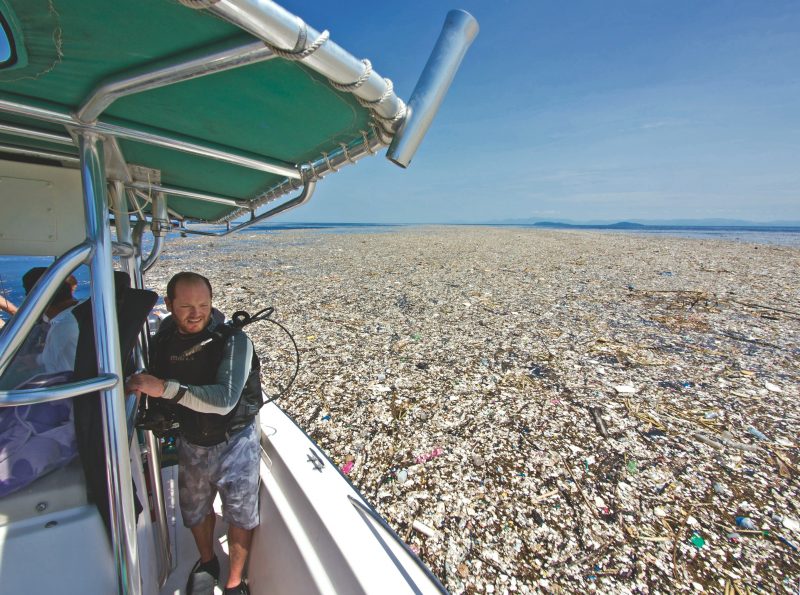
But as awareness and outrage are on the rise, has there actually been a measurable reduction in the amount of plastic we use? Are we trying to put out a forest fire, in other words, while the entire population is still hurling flaming torches at the forest?
Assuming large-scale ocean cleanups were possible, what is the best way to get rid of plastic in the ocean? There are diverging opinions and technologies emerging, as well as differing beliefs on the effect removal would have on sea life. What’s more, focusing on removal distracts from the more fundamental problem: using plastic in the first place. Many people, especially in industrialized countries, believe that recycling is a panacea for plastic. While certainly a better fate than plastic sitting for eons in landfills or degrading in the ocean, recycling is still fraught with pitfalls, and now faces a more challenging geo-economic environment.
This is the first installment in a series looking at the problems, solutions and culture of plastic — with all its conveniences and and inherent environmental catastrophes.
Here’s a look at a few ocean-plastic-removal projects. This is, by no means, a comprehensive list, and we’d like to emphasize and commend the countless individuals and organizations that are getting involved (such as Barry Spanier, whom we wrote about a few weeks ago).
Australian surfer, father, and clean-ocean advocate Pete Ceglinski co-founded the “Seabin V5” a type of trash skimmer that’s installed in marinas, yacht clubs, ports and other calm bodies of water. The Seabin removes “microplastics, microfibers [with additional filters], plastic bags, bottles and cigarette butts,” Seabin’s website says.
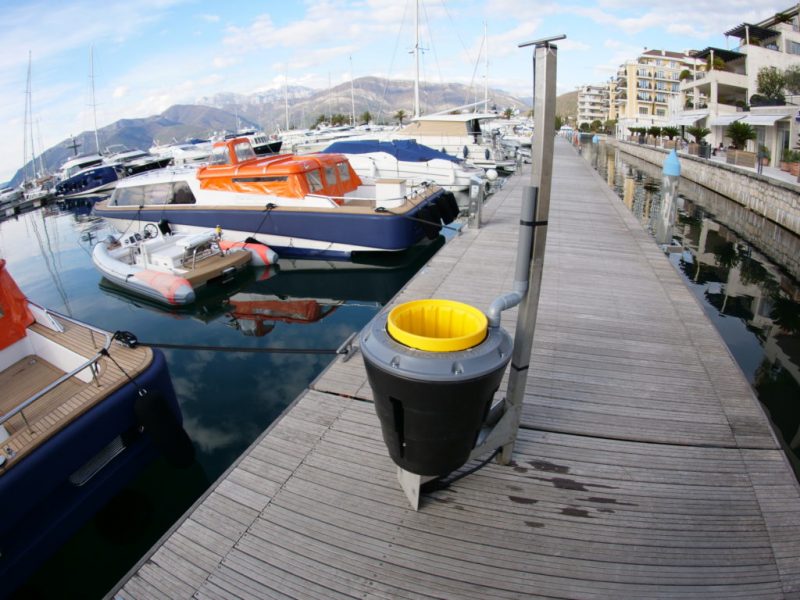
Ceglinski and the Seabin Project have installed the V5 in over 40 countries, “resulting in a total of 1.95 tons of waste extracted from our oceans every day” since 2015. On Thursday, Ceglinski will be part of a press event at the Pier 39 Marina for the first installation of a Seabin in San Francisco. The event is part of a West Coast tour that includes installations, demonstrations, educational presentations, beach clean-ups, and community events. “The goal is to empower individuals, communities, corporations and local governments to take a stand on plastic pollution and make a difference in their local marinas and ports.”
4ocean calls itself the world’s largest ocean-cleanup company, employing 150 people worldwide working seven days a week in multiple countries. The for-profit company was started a few years ago by Florida surfers Andrew Cooper and Alex Schulze. Their origin story began in Bali, Indonesia, where they were appalled by the amount of trash they saw in the water. They started paying fishermen, by the pound, to remove plastic, creating “a sustainable business model for both Bali, Indonesia, and as the fishermen. By giving ocean plastic a value, we are creating a new economy for the removal of trash.”
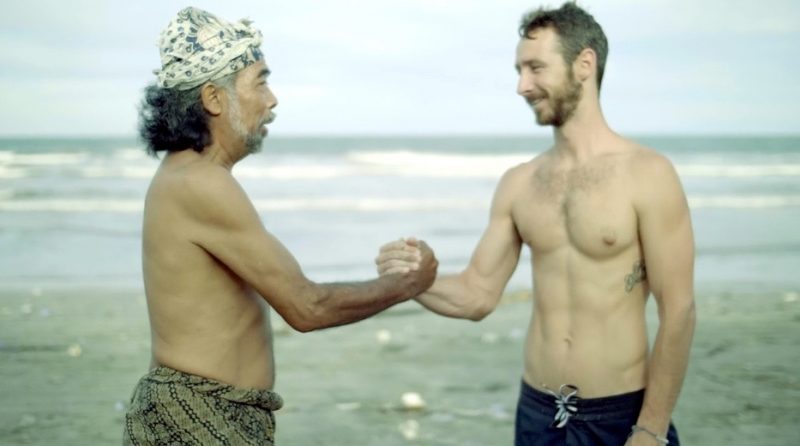
The company raises money by selling bracelets. “By purchasing a 4ocean bracelet, you will remove one pound of trash from the ocean and coastlines,” 4ocean says. “Made with recycled materials, every bracelet purchased funds the removal of one pound of trash from the ocean and coastlines. In less than two years, 4ocean has removed 5,351,374 pounds of trash from the ocean and coastlines.”
Alex Bellini, this Italian Rower Guy
As we sat down to start writing this series, Alex Bellini wrote us an email: “I am an Italian explorer and an experienced ocean-rower. I am looking for someone willing to support me in my attempt to row across the Great Pacific Garbage Patch.”
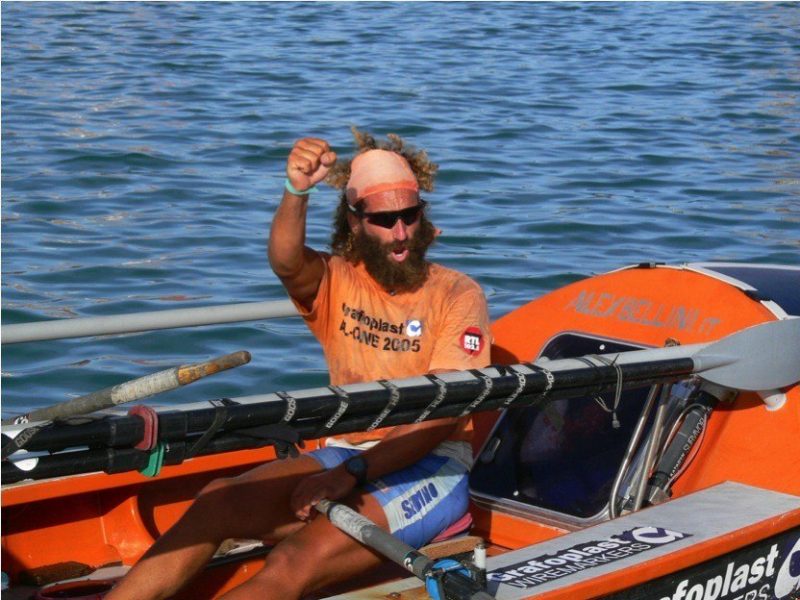
“To make this more clear, I am planning to row across this big accumulation of plastic (centered around 34°N-140°W) as part of my project called 10 Rivers1 Ocean that aims to navigate the world’s 10 most plastic polluted rivers (and the Pacific trash vortex) to raise awareness on plastic pollution.”
The Ocean Cleanup Project was an ambitious, and to some, controversial effort launched from Alameda in September 2018 to begin the process of removing the estimated five trillion pieces of plastic in the ocean — with the bulk of that trash in the North Pacific Gyre. The Project suffered a setback in December, after a 60-ft section detached from the nearly 2000-ft plastic-skimming boom. But that was only part of the problem. “We encountered some unscheduled learning opportunities,” The Ocean Cleanup Project’s website said. “Notably, the system hasn’t been able to retain the plastic it caught.”
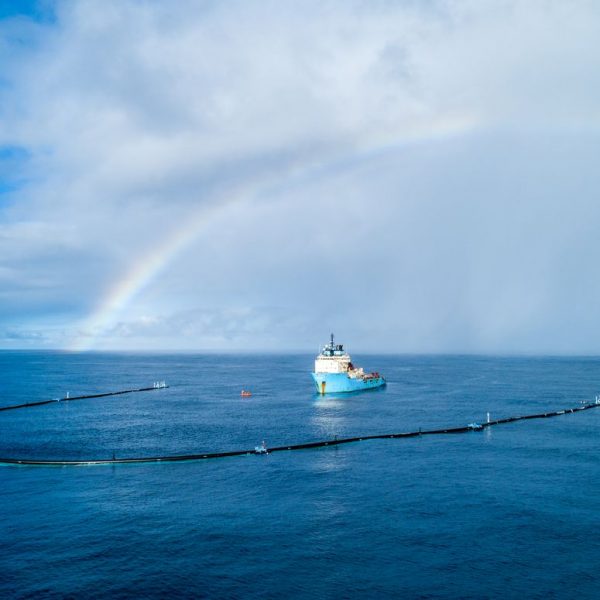
Boyan Slat, The Ocean Cleanup Project’s founder, reportedly raised some $40 million, including funds from Salesforce co-CEO Mark Benioff. We again take this as a positive sign that there’s a will to combat plastic pollution — and real money to back it up. But Slat is also aware of the limits of the burgeoning cleanup movement. “We don’t say, ‘Ban all the plastic’ — we sort of provide an alternative that’s better, that’s exciting, that fits into a world view that you can be excited about,” Slat told Carolyn Kormann of The New Yorker. Kormann quoted a professor of environmental science who commented on Slat’s unique success, and what it might say about the public at large. “We always love the idea of cleanups more than we love the idea of prevention, or mitigation . . . We love treating illnesses more than we do preventing them. But our affinity for simplistic solutions isn’t innate; they’re narratives we’ve been sold.”
There is also a debate over the urgency of cleanup versus the necessity of prevention. “The Ocean Cleanup is a ‘distraction from the real solutions that the entire global movement is now working on,'” Kormann quoted a scientist as saying. She went on to write: “The looming public-health crisis has bolstered environmentalists’ arguments that the priority of governments, N.G.O.s, and the public ought to be preventing plastic from entering the ocean in the first place. According to some analyses, a 45% reduction in the leakage of plastic from land to sea is possible by improving waste management in China, Indonesia, the Philippines, Thailand, and Vietnam. But funding for such projects is scarce. When I asked [an anti-plastic activist and organizer] about Slat’s plan to remove the plastic from the ocean, he said, referring to the money that Slat had raised, ‘If I had forty million dollars, I could set up zero-waste programs all over Asia.'”
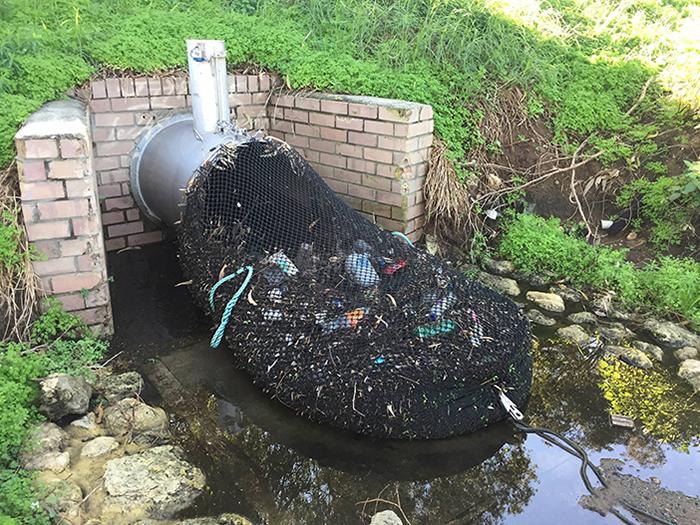
We tip our hats to all the cleanup efforts underway — but we also sense a trend. Surfers and adventurers making a stand against plastic pollution, and that’s great. But for real, measurable change, plastic manufacturers need to take up the cause with the same vigor as this handful of activists, and then fork over some serious cash. Most importantly, consumers of plastic — which is the majority of humans on the planet — need to radically curb their use. (We think that plastic waste simply needs to be properly defined by the market; pollution has a cost that must be factored into the price of the product doing the polluting).
National Geographic’s Planet or Plastic series cataloged a “running list of action on plastic pollution,” which said that 250 organizations, who are responsible for 20% of the plastic packaging produced around the world, have committed to reducing waste and pollution. “The initiative is called the ‘New Plastics Economy Global Commitment’, and it includes a diverse group of members including the city of Austin, clothing company H&M, Unilever, PespsiCo, L’Oreal, Nestlé, and Coca-Cola.”
Again, great news, but it’s important to note that many large producers of plastic publicly embrace recycling campaigns, but privately fight measures that cut into their profits. “One approach to recycling that many of these companies [including Coca-Cola, Pepsi and Dow] do not support has proved to actually work: container deposit laws, more commonly known as bottle bills, which cost them lots of money,” the New York Times recently reported.
The push and pull of plastic pollution persists. Please stay tuned for part 2 of The Plastic Plague, coming soon.
Thoughts? Opinions? Please comment below, or email us here, and please be sure to include your boat name, make and port of call.
